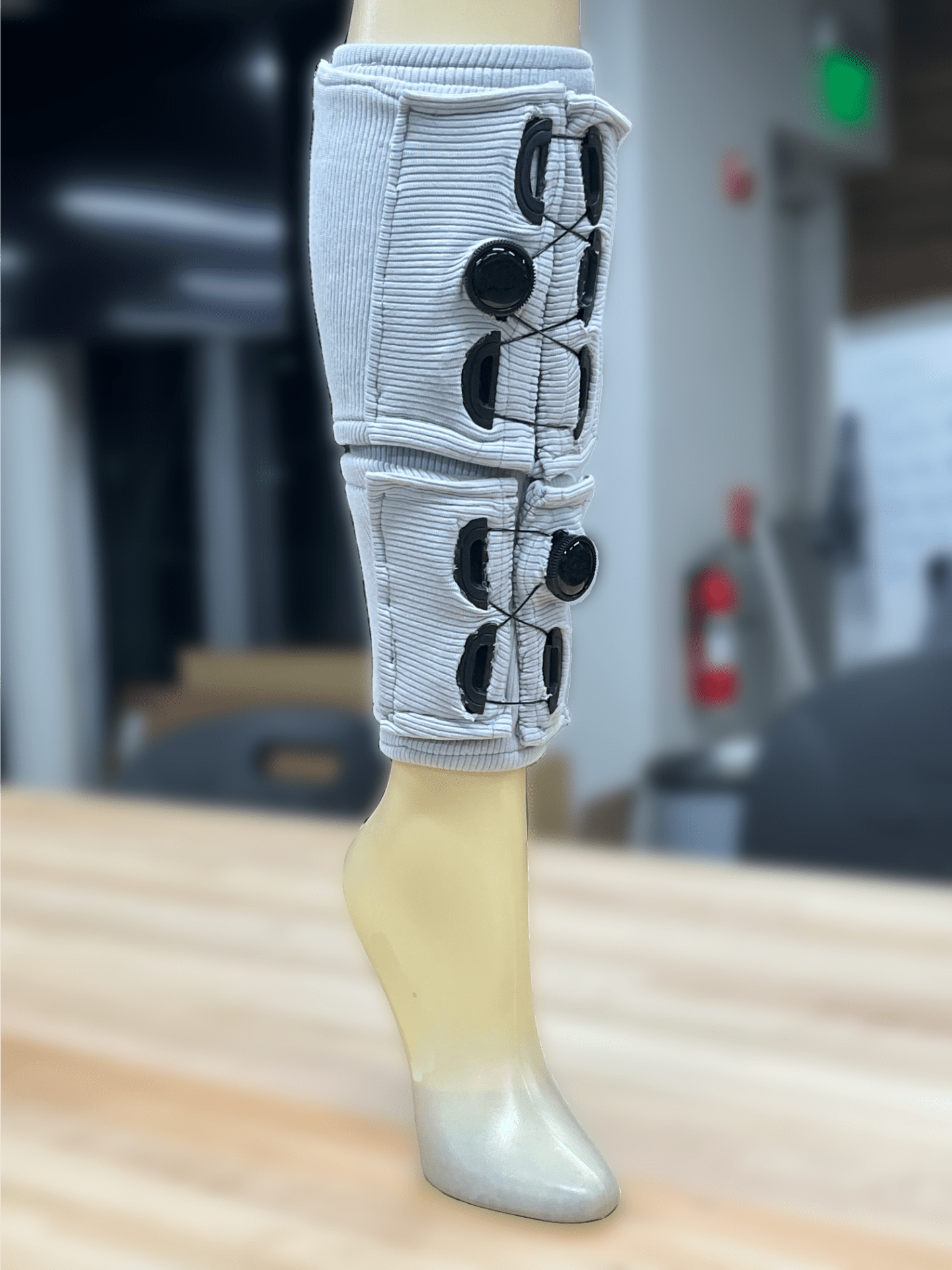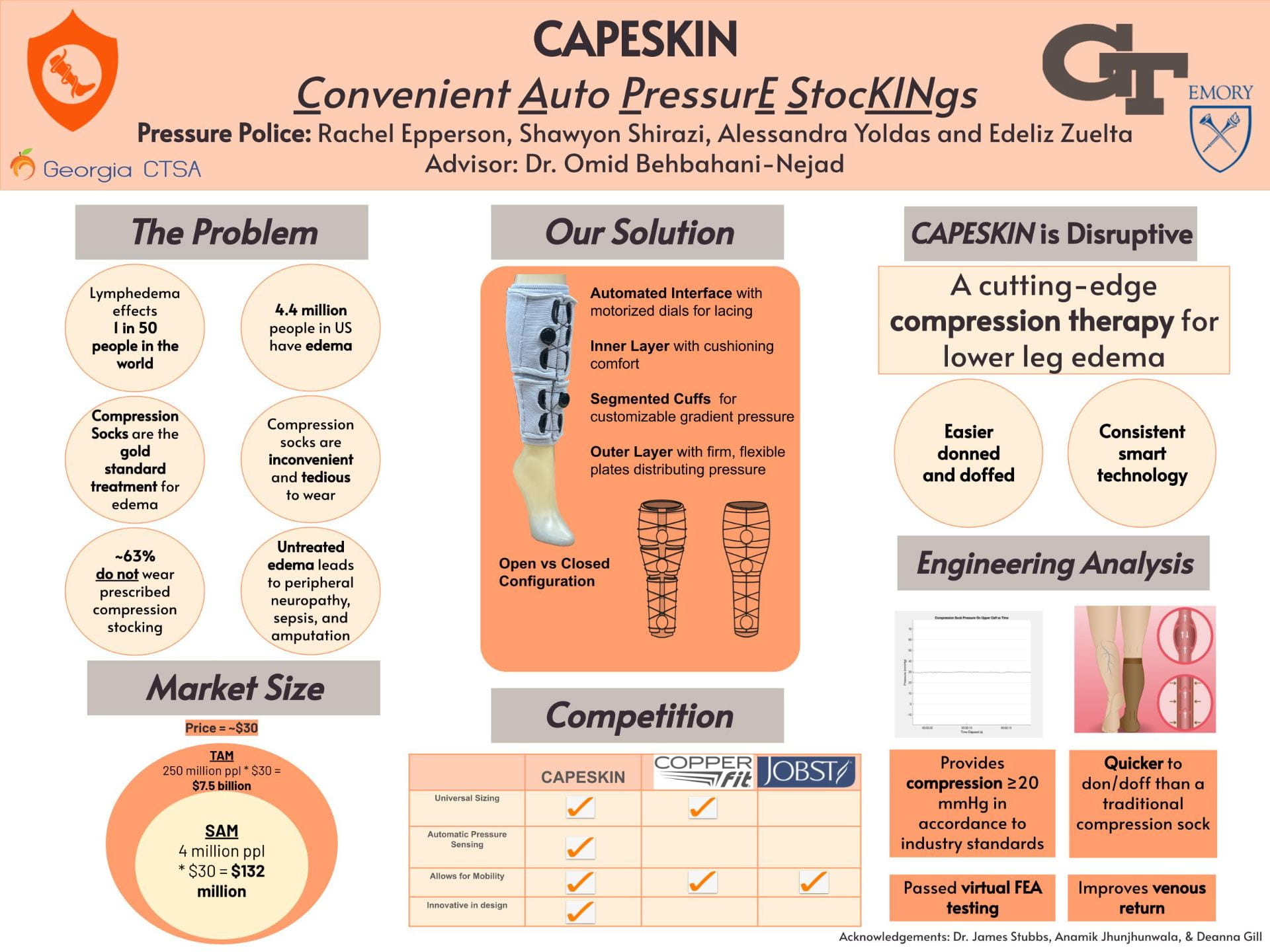Connect our team on LinkedIN!
Rachel Epperson, Shawyon Shirazi, Alessandra Yoldas, and Edeliz Zuleta
Pressure Police
Convenient Auto Pressure Stockings (CAPESKIN) project focuses on the creation of a lower leg edema compression there device.
Project Description:
Approximately 1 in 5 people will experience lower leg edema at least once in their lifetime. Lower leg edema is characterized as swelling of the lower extremity below the knee due to poor blood circulation. This condition is found in things as common as pregnancy and sitting in the car or plane for extended periods of time, to things such as lymphatic cancer and deep vein thrombosis. The current standard of treatment for lower leg edema is compression stockings. These apply tight, restrictive compression to the lower leg, making it difficult to put on and take off. Due to this difficulty, compression stocking users experience a 63% noncompliance rate even when prescribed the stockings by their doctors. The CAPESKIN is a compression therapy device that aims to increase compliance by creating a device that is easy and quick to put on and take off. The CAPESKIN is innovative in its design, as it has a 3-cuff pressure gradient to encourage the upward flow of blood. It considers technology and is modernized with its addition of pressure sensors in each cuff. These sensors are connected to an app that can be downloaded to any phone. The data can be analyzed and reported back to the user in a way they can interpret, as well as be stored for reference of the user, clinician, and caregiver. It leverages the build of the body by allowing the user to apply the least amount of effort to put on and take off their compression therapy. The CAPESKIN aims to make compression therapy for lower leg edema patients consistent, effective, and easy.



